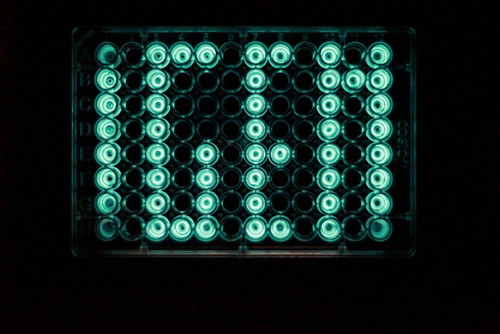Tracks/Art Design
From 2014.igem.org
m |
|||
| Line 5: | Line 5: | ||
<style type="text/css"> | <style type="text/css"> | ||
| - | + | #art_design {display: block;} | |
</style> | </style> | ||
Revision as of 20:06, 17 December 2013
iGEM 2014 Art and Design New Track
Introduction
iGEM is a unique design competition for engineering students. Over the past ten years, thousands of students from dozens of countries have imagined a future where biology is the ultimate design medium, with applications in medicine, energy, and the environment built from open-source, standardized parts. The growth and success of iGEM has centered on the power of this vision of biological design.
iGEM calls on students to build diverse teams of students and advisors, bringing together knowledge from biology, chemistry, physics, engineering, and computer science to develop new technologies. Often the most successful teams also work hard to imagine their projects in a social context, working with students and advisors from the humanities and social sciences to explore topics concerning ethical, legal, social, or safety issues related to their work. Considerations of these “human practices” is central to building safe and sustainable projects in the public interest. iGEM teams that make significant contributions to this area, integrating social concerns into the design of their synthetic biology devices are awarded with the Special Prize for Best Human Practices Advance.
Since 2009, another development has been the number of teams working closely with artists and designers, incorporating elements of artistic enquiry and experimental speculative/critical design practice into their projects, even inspiring engineering/science teams to adopt these approaches. Much of this work seeks new ways to consider the ethical, social, cultural and political implications of synthetic biology, as well as adding strong concepts to drive iGEM projects. Collaboration between artists/designers and scientists/engineers has taken many forms in the context of iGEM, including:
- Teams of science and engineering students collaborating with artists and designers to develop their ideas through speculative scenario planning or future product prototyping, including University of Cambridge 2009 (Grand Prize Winner), 2010; Imperial College 2011 (First Runner Up).
- Teams of art and design students with input from scientific advisors, such as ArtScienceBangalore 2011 (iGEM Best Human Practices Advance, and also recipient of an important accolade in art, an Honorary Mention at the International Prix Ars Electronica 2012), using art to drive their iGEM projects, but also making a scientific contribution too, e.g. ArtScienceBangalore 2009 which made a BioBrick to produce the ‘smell of rain.
- A team of artist/design students working exclusively on speculative design work in an arts context, Weimar-Heidelberg Arts 2010
- Teams of science and engineering students using design practice, such as Harvard iGEM 2010 ‘iGarden’ or Cornell iGEM 2012.





Many more teams fit somewhere along this spectrum, contributing significantly to the Registry, as well as to Human Practices, innovating communication and outreach, developing imaginative projects with great potential for future technologies in a range of applications, as well as developing new design practice in the processes of biological engineering. The teams incorporating art, design and human practice see applications and implications are inseparable in their design thinking, which we believe is very important for the future success of synthetic biology.
What We're Looking For
The details of judging rules and requirements for both the cross-track Art & Design Prize and the Art & Design Track will be updated within the next month. In principle, we are looking for:
- Thoughtful, critical, investigation using art and design to open up our thinking.
- Collaboration between artists, designers, engineers, scientists, and social scientists.
- Projects that use art and design to consider and explore current and future implications of synthetic biology, including stakeholders, communication, pedagogy, thinking outwards.
- Projects that use art and design to innovate around issues of applications, social, cultural, ethical, political, economic and technological implications and applications of synthetic biology, especially related to the scientific aspects of the project.
- Who will be using synthetic biology, what new laws might be needed, how might it change the way we live?
- Actively engaging with the public, communities and stakeholders to open up debate and discussion.
What we don't want:
- Projects that use design language simply to add a veneer of gloss to synbio, such as making fake applications that only serve to increase hype around the subject but do not add value beyond that.
- Projects that only focus on visualizing or aestheticizing biological material, without a broader investigation driving the work.
Art and Design Committee
- Chairs: Alexandra Daisy Ginsberg and Christina Agapakis
 "
"